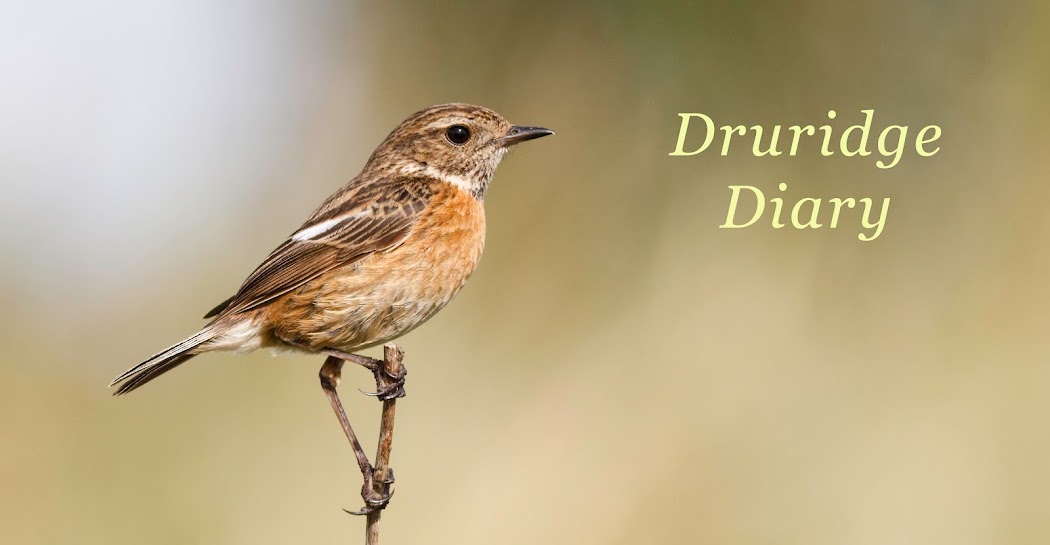The forecast today was for rain from about 9am. For once it was bang-on.
Janet and I walked the length of the patch and got back tot he car 09.22 - just as the heavens opened. About 750 Pink-footed Geese took off from the Budge Field just before we got to the hide, presumably they'd roosted there overnight? Otherwise there wasn't much of note on our walk, three Chiffchaffs were calling and there were two male Greenfinches by the turning circle - so different to three greenies I had last week.
The finch flock was mostly in flight and easily exceeded 250 birds, including at least 12 Lesser Redpolls and a handful of Reed Buntings (Yes I know - they're not finches).
We also had interesting bird overhead. We heard it from some way off giving a pipit/wagtail type call but loud and explosive. The calls were all single calls, well-spaced, apart from once where it gave a double 'duit-tcheck' type call, then continued south giving single 'duit' calls. I've had a listen to Xeno-canto this morning and the nearest match is Richard's Pipit - a species I've no recent (and no UK) experience of. Nothing to submit but interesting... When I hear it again, I'll know what it is .
Yesterday morning I tried a two-hour seawatch over the high tide (0950-1150), after a short spell of northerly winds it could be good (I thought).
Gannets and Auks dominated, I estimated about 30-40/minute of each. The Auks were probably 90%+ Guillemot with the remainder Razorbills, no little'uns yet.
 |
| A typical sight for most of the morning, strings of Gannets headed north, some of them very close to the shore |
Other highlights were:
Sooty Shearwater 2N
Velvet Scoter 2 Drakes N (together with a teal in tow)
Sandwich Tern 1N
Shag 2
Red-throated Diver 22 on the sea and 8N
Wigeon 13N
Purple Sandpiper 1N
Turnstone 5N
Slavonian Grebe 1 (with Scoter Flock)
Common Scoter 115 (c90 on the sea with 25 past)
 |
| Gannets headed north - I've had a go at ageing them below. |
Gannets are long-lived birds with an average life-expectancy of 17 years, the oldest record Gannet was 37 year old. Gannets can be aged by their plumaged up to about their 6th year when they are 'adults' -but it isn't always clear-cut.
Working from left to right:
Bird 1 - An adult (so more than five years old) - the secondaries are all white
Bird 2 - Probably 4th year - Quite a few black secondaries (like piano keys) and tail feathers
Bird 3 - Good contrast with Bird 2 - hardly any black secondaries so I would say 5th year
Bird 4 - All Dark with a lighter tailed band and some white 'sprinkles' - Juvenile bird
Bird 5 - Many more black secondaries but with a yellowish head and more white on the neck and back - probably a 3rd year.
Birds 6 and 7 are both juveniles

2 comments:
We saw your Velvets and Teal at Boulmer...
Roger Foster and Dave Dack had them at Newbiggin too, but they had two birds in two. Must've lost one at Lynemouth..
Post a Comment